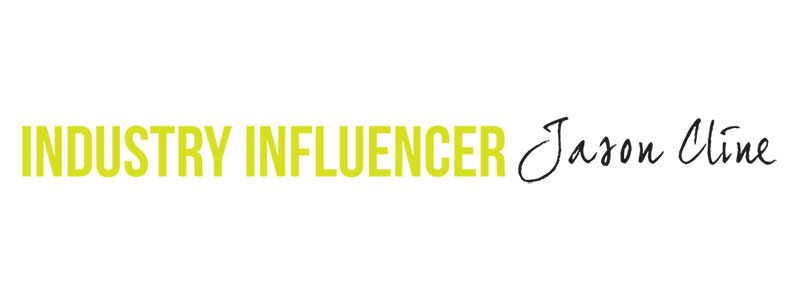

Jason Cline, president and CEO of the Printing and Imaging Association of Georgia (PIAG), has used his three years at the helm to celebrate the successes, attack industry challenges and work to quell the concerns of PIAG members within the printing industry. With nearly 20 years of experience in association management, his role has helped raise awareness of Georgia’s established community of printing businesses.
How did you find yourself in the printing and imaging industry?
After having served in various roles with increasing responsibilities at previous organizations, obtaining a graduate certificate in nonprofit management and earning my Certified Association Executive (CAE) credential through The Center for Association Leadership, I began searching for my first role as a CEO. I was living in Indianapolis and looking to make a move both professionally and personally, so I was really able to expand my search throughout the country to find the right fit. I found the posting for the Printing & Imaging Association of Georgia, interviewed with the PIAG search committee and CEO of the national organization – Printing Industries of America (PIA) – in January 2016, and I accepted the position and began my tenure in May 2016.
What goals do you have for the PIAG in 2019 and beyond?
For PIAG specifically, there are so many things that members can utilize and take advantage of through their membership with us and complementary membership in PIA. My goal in 2019 is to increase participation in these programs and services in order to provide a greater return on membership investment through their dues. We will be increasing and expanding our communications and marketing efforts, partnering with other industry-related associations to offer additional programs and holding additional events during the year. This year is PIAG’s 125th anniversary, so we are making an intentional effort to reach out to members throughout the state by hosting events in and outside the metro Atlanta area. What will success look like from these efforts? Greater member engagement, the intrinsic belief that PIAG membership is an essential part of a member’s business and continued growth of the association in terms of members, knowledge and industry support.
What challenges are you seeing in the printing and imaging industry today and with your members?
There are three challenges that are continually being discussed at events, board meetings, amongst members and others in the industry.
The first is attracting talent and increasing awareness and interest in careers within the industry. As the printing industry workforce ages, it is critical to create and maintain a pipeline of interested and qualified individuals to replace those who are retiring or to fill roles created by technological advances. PIAG has approached this from multiple angles. First, we dedicated an entire issue of our quarterly publication, PrintQueue, to workforce placement, specifically providing alternative resources for talent recruitment outside of what has been utilized in the past. There are many people with mechanical or technical skills who can be trained for work in the printing industry, and they are only going to be found by looking in places where we typically haven’t looked before.
Additionally, PIAG and member companies work closely with colleges, universities and technical schools to increase awareness of career opportunities within the industry. We regularly meet with faculty to discuss the needs employers have so they may develop a curriculum that produces educated individuals who can easily transition to a role and career in the field. It also has become apparent that increasing awareness about potential graphic communications careers must start well before students enter college – even as early as middle school. For those students whose paths don’t include college, they must be made aware that careers and educational paths exist for technical trades.
Another issue that is widely discussed is the increasing prices for supplies and materials. Like any business, an increase in costs must either be absorbed or passed along to the customer. Both of these can have a negative effect on a company’s bottom line through a decrease in profit per job or by less spending by a customer because of the increased costs.
What common support are you finding members seeking from the PIAG?
PIAG members want their businesses to be successful and more profitable. They see PIAG as a resource to help make that happen for them. Another role the association serves is by making connections members may not be able make elsewhere. I have heard at least one member report after every event we hold that the member met someone who has either become a customer or supplier. Networking sometimes can be an intangible benefit that is hard to monetize or place value on until you realize the reward for yourself. But, we know that the association is, and should be, the connecting point between any problem and solution. I like to think that associations are the clearinghouses for information. Associations used to be the place where members would go to get information. Today, with technology and the internet, information is widely available. People can find information on their own. The purpose associations now serve is to gather the information, weed out what is useful or not and provide that to the members. We spend the time and effort going through the abundance of information and provide what we feel is relevant to members.
What technological advancements appear to be on trend within the industry and with PIAG members?
When it comes to strategy in the printing industry, printers first should address the dual issues of product/service focus and value-added ancillary services. Financial performance typically correlates with specialization by a printed product or vertical market. Many times, this includes the utilization of a new technology. Also, diversification into various ancillary services also generally correlates with higher profits. This dual strategy works by lowering costs from specialization and increasing revenues from diversification. Printers need to re-think where they are in this process and make new, conscious decisions about what they are doing. One of those areas is with the growing demand for personalization of marketing. Printers must have the technology to produce these customized marketing pieces, and this is typically done with advanced databases and database management services. Customers’ needs continue to change, and printers must be able to help them communicate their targeted messages.
You will be partnering with FSEA and IADD for the upcoming Odyssey Expo in Atlanta. What do you think your membership can learn from attending Odyssey Expo 2019?
As stated in the previous question, the diversification services that a printer is able to offer its customers will only increase the value provided and the profit generated. The PIAG-sponsored track of educational sessions will highlight ways that can be accomplished, whether it is by adding finishing capabilities in-house or by partnering with a company that provides expertise in that area. Secondly, there are many graphic designers within the industry who are members of PIAG. There also will be a session that teaches how to design pieces with foil and specialty effects in mind. Overall, I hope that members from all three associations can learn from each other and make connections that will lead to increased business for all.

